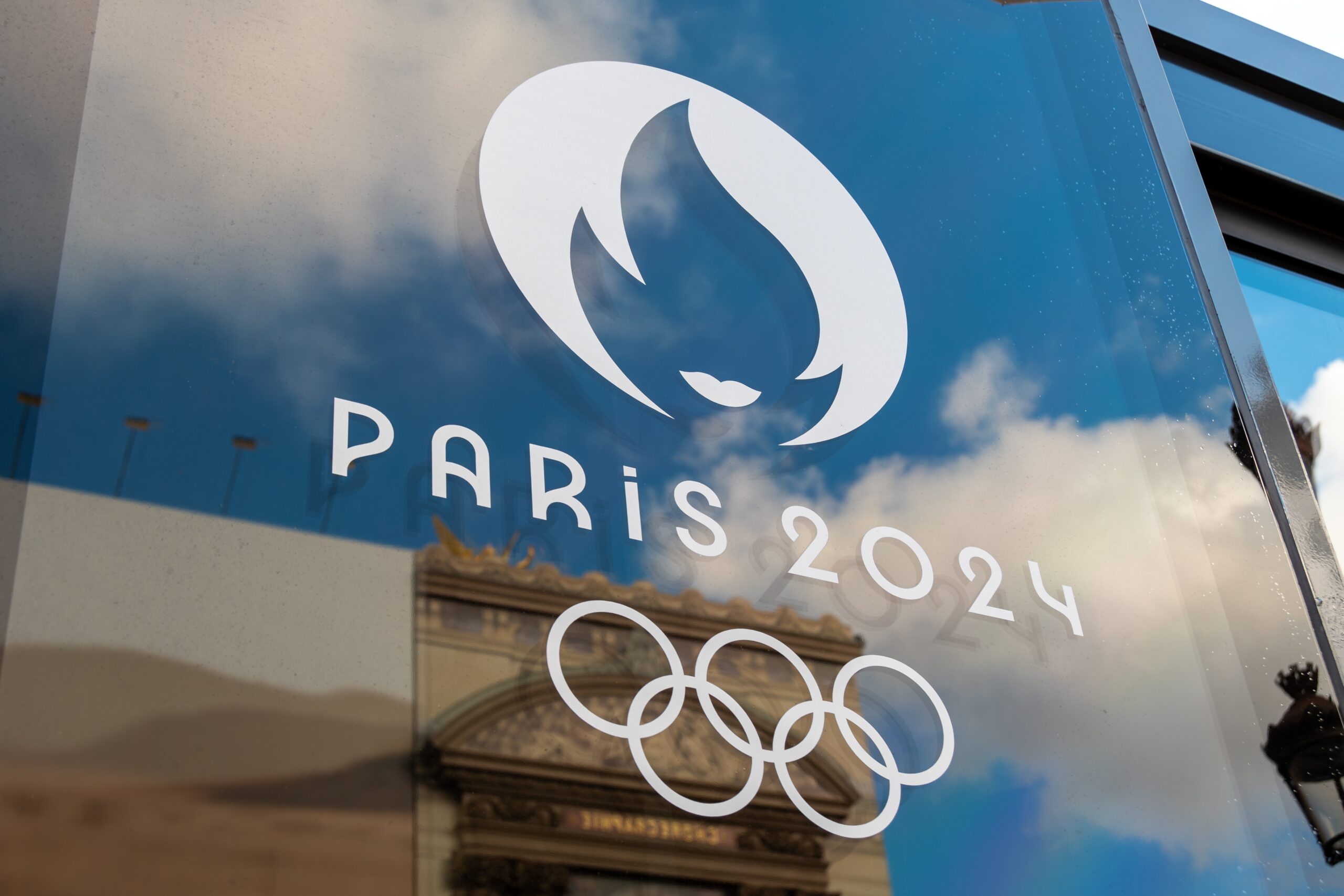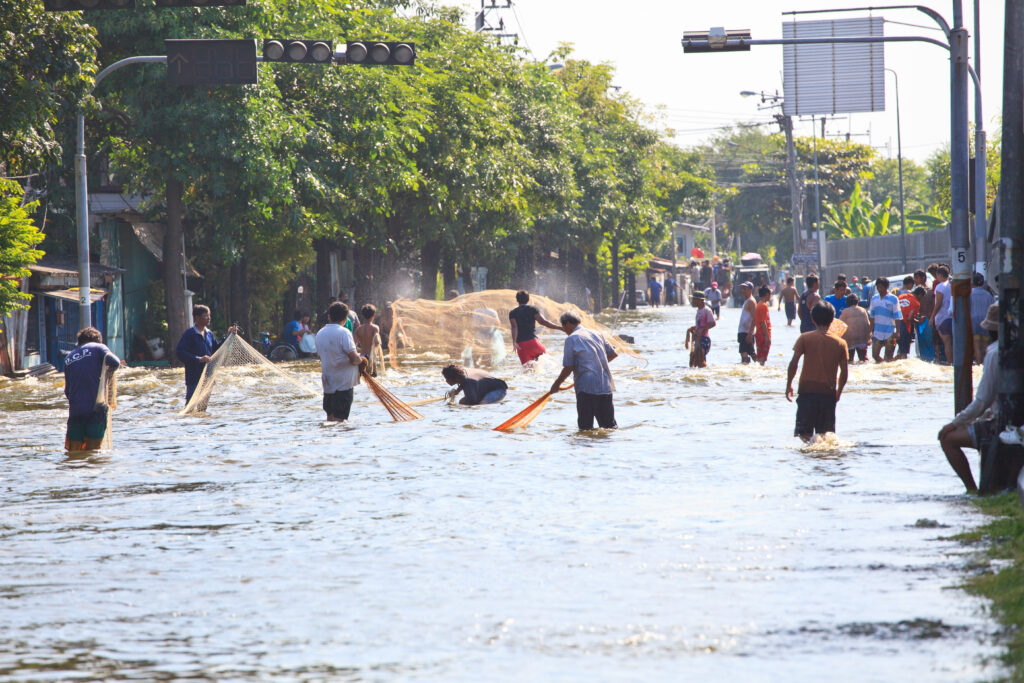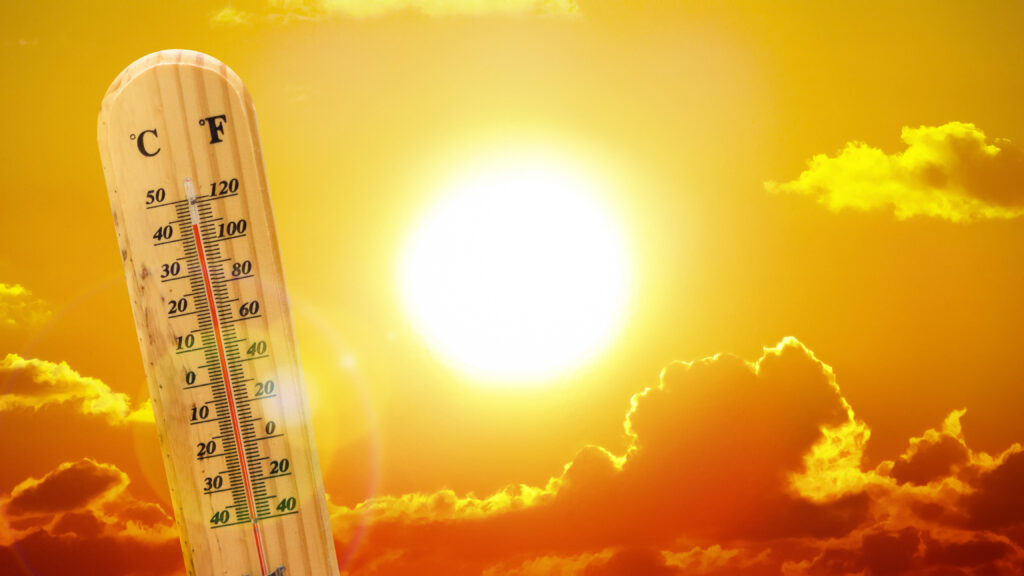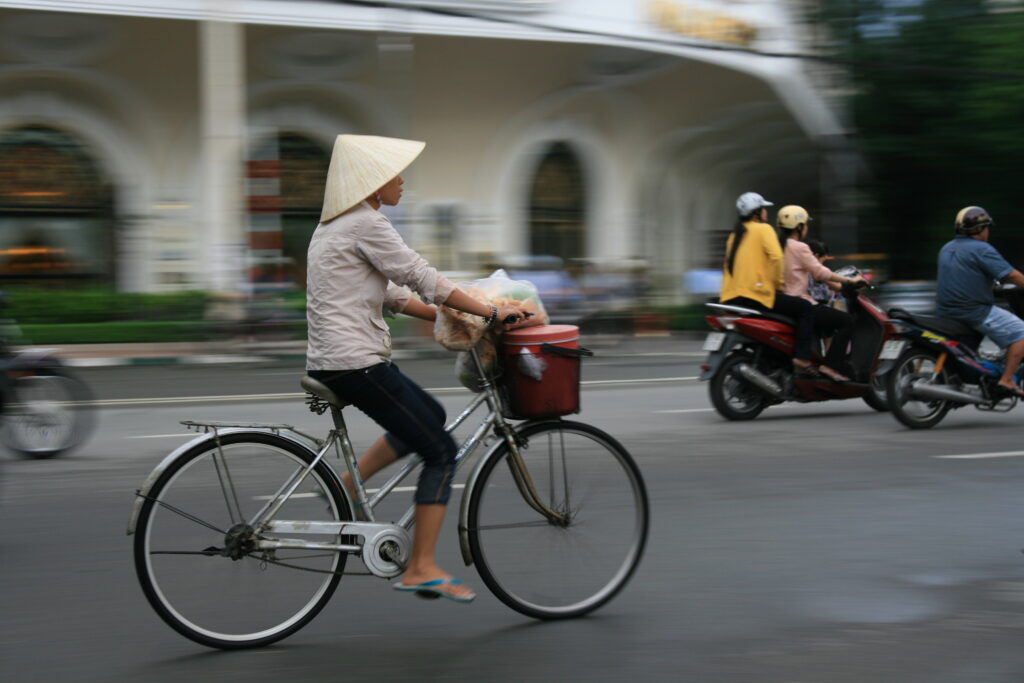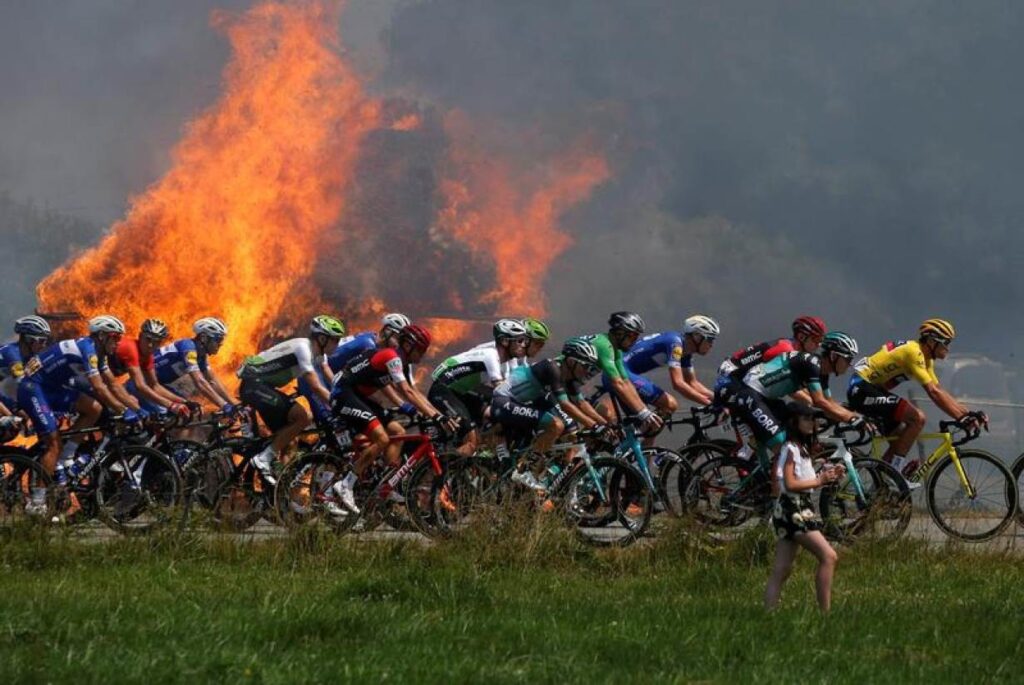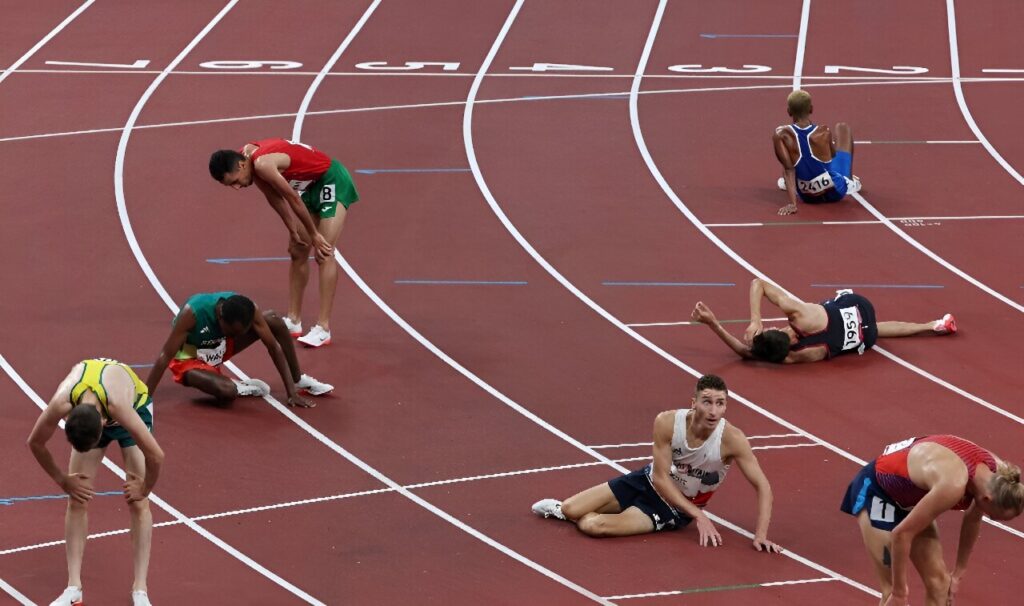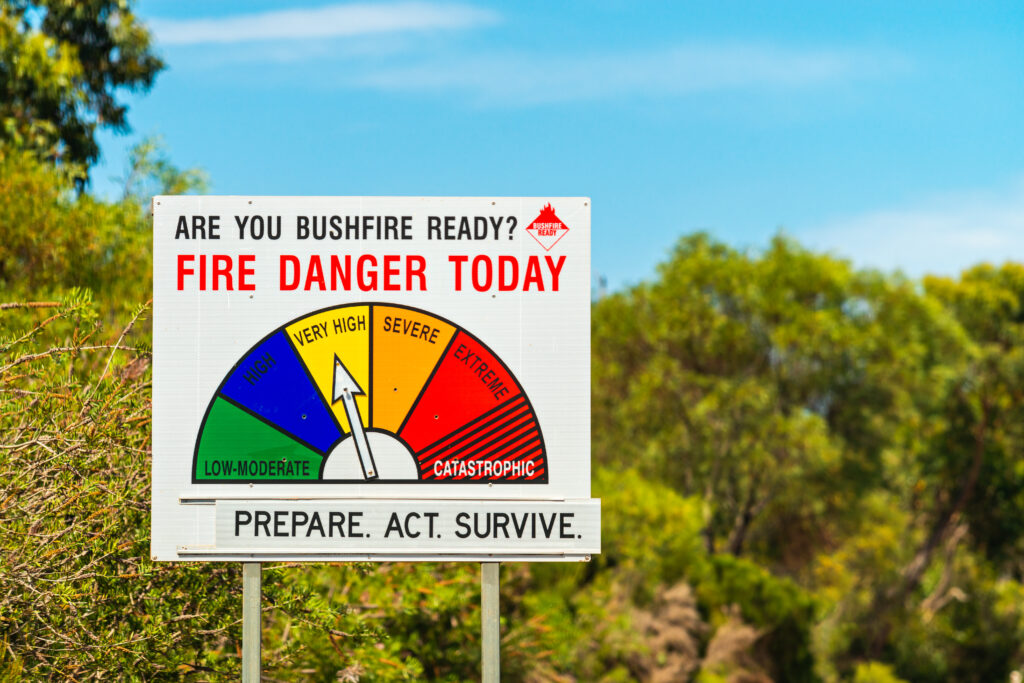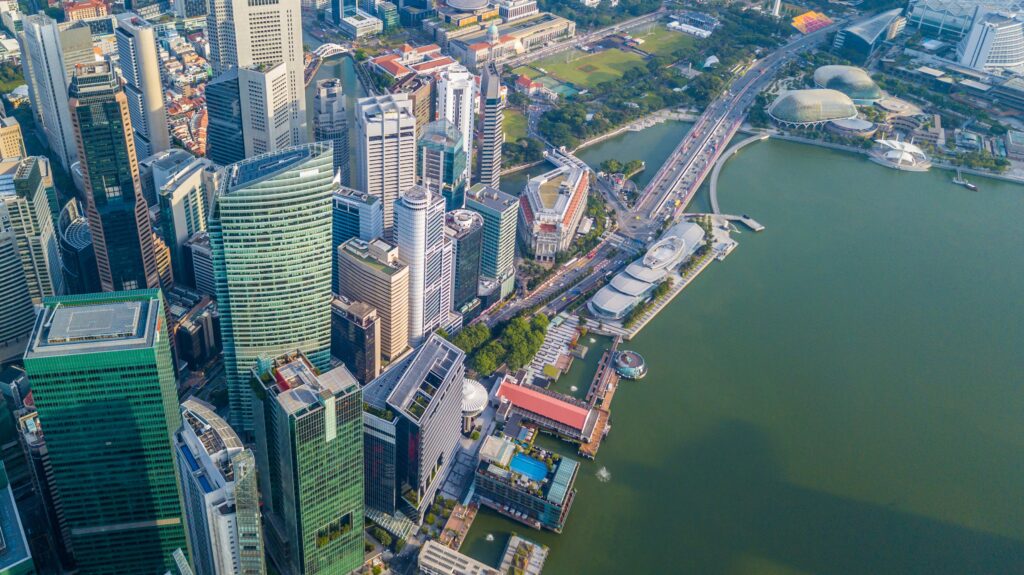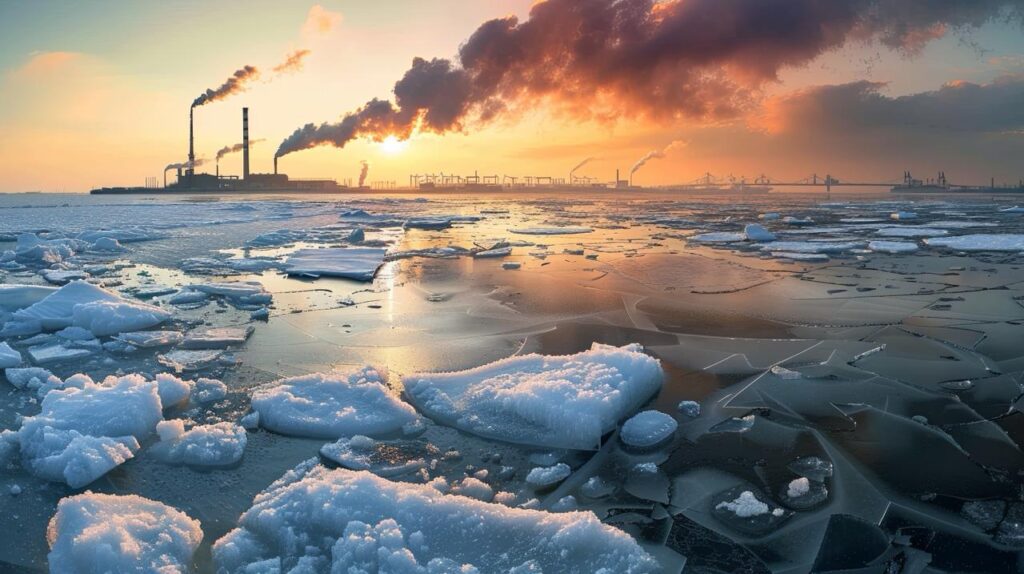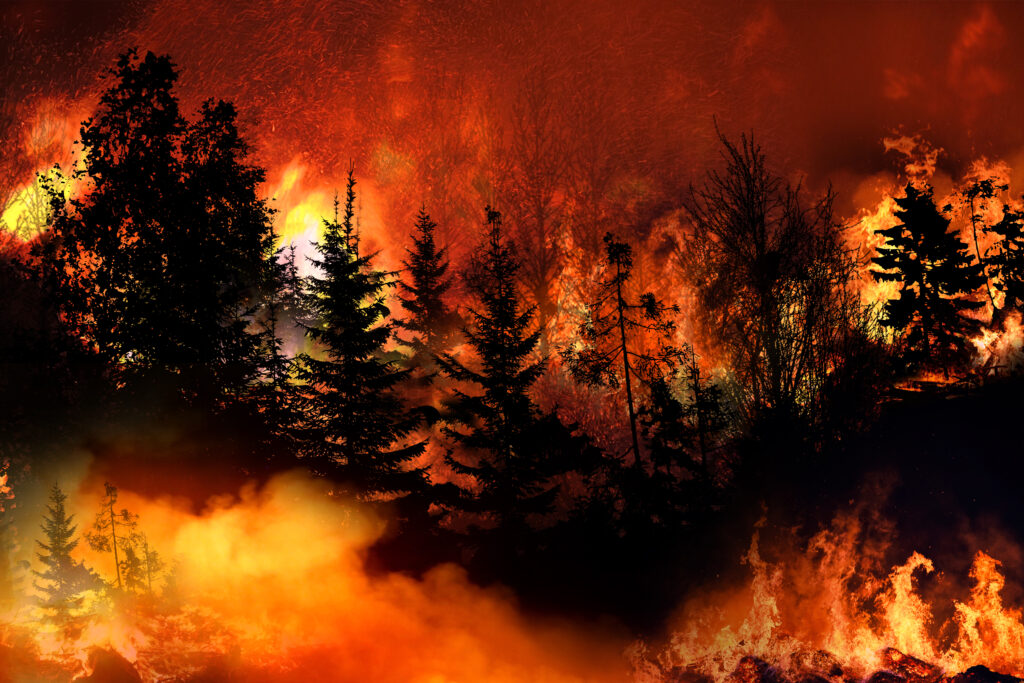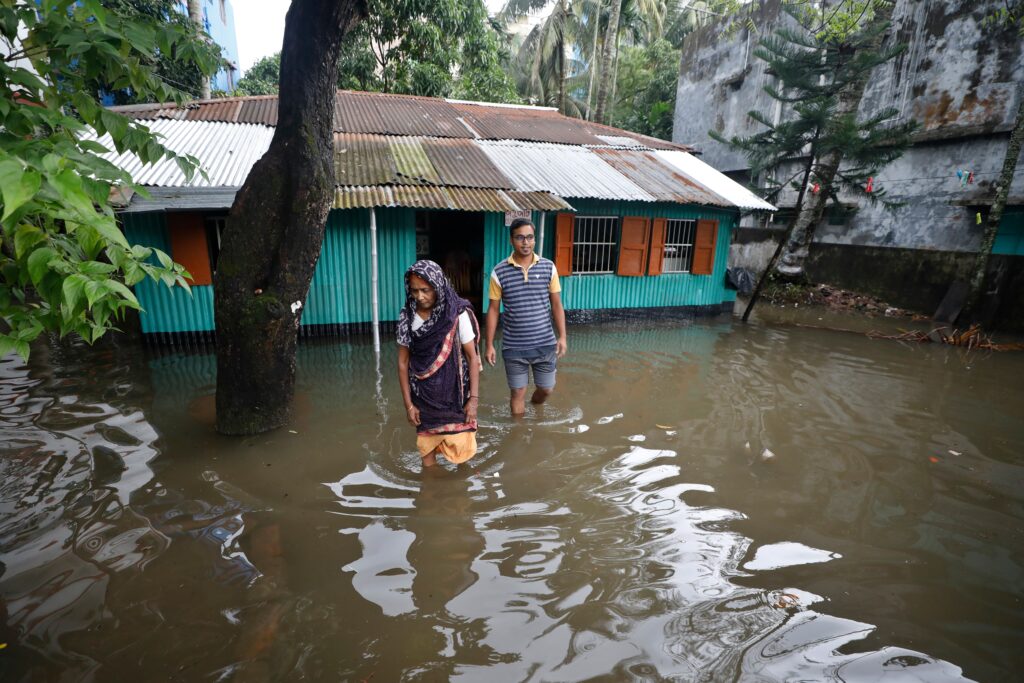The much-anticipated 2024 Paris Olympic Games will take place when our planet is at its hottest in recorded history. The climate crisis is impacting every area of our lives, and sports is no exception. With 75% of athletes saying climate change directly affects their health and performance, those competing at Paris 2024 Olympics are making their voices heard.
“Challenges are mounting for athletes regarding air pollution, food and water insecurity and lack of shade,” said Jackson Tuwei, president of Athletics Kenya, in the new report Rings of Fire: Heat Risks at the 2024 Paris Olympics. “And, as this report makes especially clear, the challenges of climate change induced extreme heat for athletes are extensive and pose risks of devastating outcomes.”
The 2020 Tokyo Olympics – the hottest in history – saw temperatures reach over 34°C alongside 70% humidity. Competitors experienced torturous conditions, leading to vomiting, fainting and the need for wheelchairs. And now, cases of extreme heat undermining the health and enjoyment of sporting events have only increased.
Climate Change Brings Intense Heat to Paris
2024 Olympic Games are taking place in Paris, the birthplace of the global pact – known as Paris Agreement – to limit average global temperatures to 1.5°C above industrial times. Yet, due to climate inaction, and primarily massive greenhouse gas emissions from the continued burning of fossil fuels, the world has endured 12 consecutive record-breaking months of heat, with the global temperature across the period the highest in recorded history.
Within Europe – the fastest-warming continent on Earth – average annual temperatures in the French capital are now 1.8°C higher since Paris last hosted the Olympics in 1924. Significantly, the city’s heat in summer is intensified due to the urban heat island effect. Temperatures are now 3.1°C higher on average during the months that Paris 2024 Summer Olympic Games will take place.

1971-2000 baseline. Source: Ring of Fire report
As well as higher average temperatures, Paris in the height of summer is now highly prone to extreme heat. There are now on average 23 more “hot” days (25°C or above) and nine more “scorching” (30°C or above) days per year since 1924. The area has seen 50 heat waves from 1947 to 2023, which have been increasing in frequency and intensity due to global warming. The city’s its highest recorded temperature reached 42.6°C in 2019. By 2050, it could face temperatures as high as 50°c.
Spotlight on Paris Olympics 2024
This year’s Olympics will occur around the same period of the year of the deadly 2003 record heat wave, which caused many thousands of deaths during that tragic European summer. A study in the Lancet found that Paris had the highest heat-related death rates of 854 European towns and cities between 2000 and 2019, partly due to its lack of green space and dense population.
A climate simulation study has confirmed that Paris faces a significant risk of record-breaking temperatures this summer, as well as a heat wave risk that could affect athletes, the public and the Games’ overall organisation. “In 20 years, the climate has changed and the idea was to warn policy-makers that something even worse than 2003 could happen, that it’s possible,” said lead author Pascal Yiou.
While the 2024 Paralympics take place later in the summer, late-season heat waves in Paris are not uncommon. Paralympic athletes also face increased risks of exertional heat illness, and at the Tokyo Paralympics, more than one in five competitors experienced at least one heat-stress-related symptom.
Sports and Climate Change: Heat Risks for Athletes
Heat can impact the health and performance of athletes in many ways. At the very least, they can place competitors at a competitive disadvantage, disrupting sleep and forcing them to train earlier and earlier in the morning to avoid the hottest parts of the day, said Jackson Tuwei.
However, training and competing in heat also poses direct dangers to athletes. Extreme conditions hinder the body’s ability to lose heat and regulate core temperature, explain Professor Mike Tipton and Dr. Jo Corbett in the report. This impairs physical performance, especially during prolonged and intense activity, and causes cognitive impairment. High heat and humidity can also cause specific harmful impacts, including sunburn, heat cramps, heat exhaustion and heatstroke.
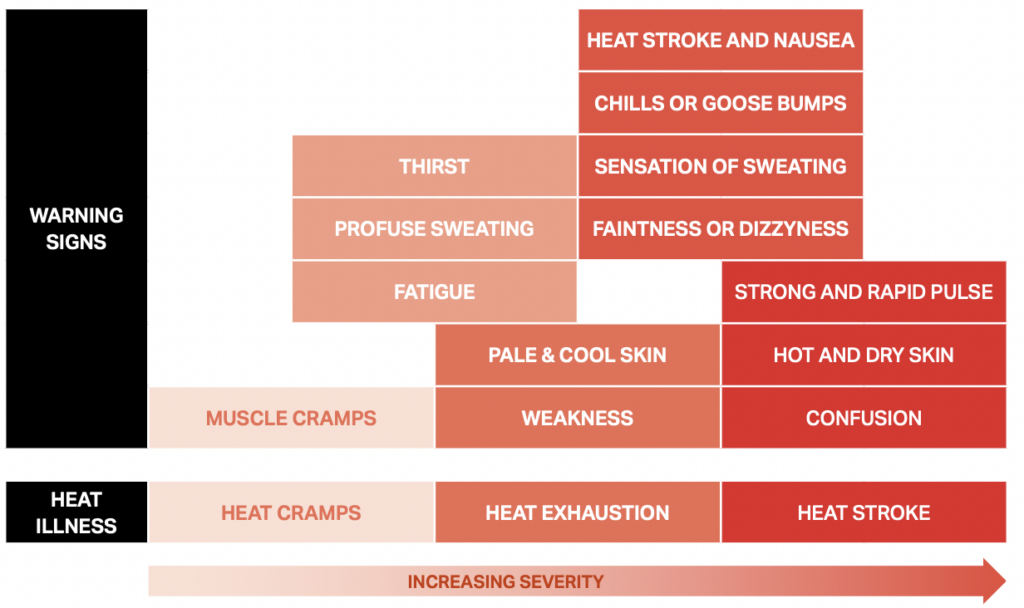
It’s when heat combines with high humidity that conditions can become incredibly dangerous. These high wet-bulb temperatures pose particular threat to athletes, as humidity significantly impacts the body’s ability to evaporate sweat and avoid heat stress. A wet-bulb temperature of more than 35°C can be deadly. These risks to health and well-being can impact not only athletes but officials and spectators too.
Stories from Olympic Athletes: The Dangers of Competing in Extreme Heat
For professional athletes competing in heat, these dangers are very real, and their impacts can play out live in front of thousands of spectators.
Pragnya Mohan is the highest-ranking triathlete in Indian history, revered for her pioneering achievements in a sport that is steadily gaining popularity in India. But in her home city of Ahmedabad, it’s impossible to train outdoors after 8 a.m. for most of the year due to extreme temperatures reaching 40°C, Pragnya told Climate Impacts Tracker Asia (CITA). Partly to escape this heat, Pragnya spends most of the year in Europe to train — returning home to compete in races held in India.
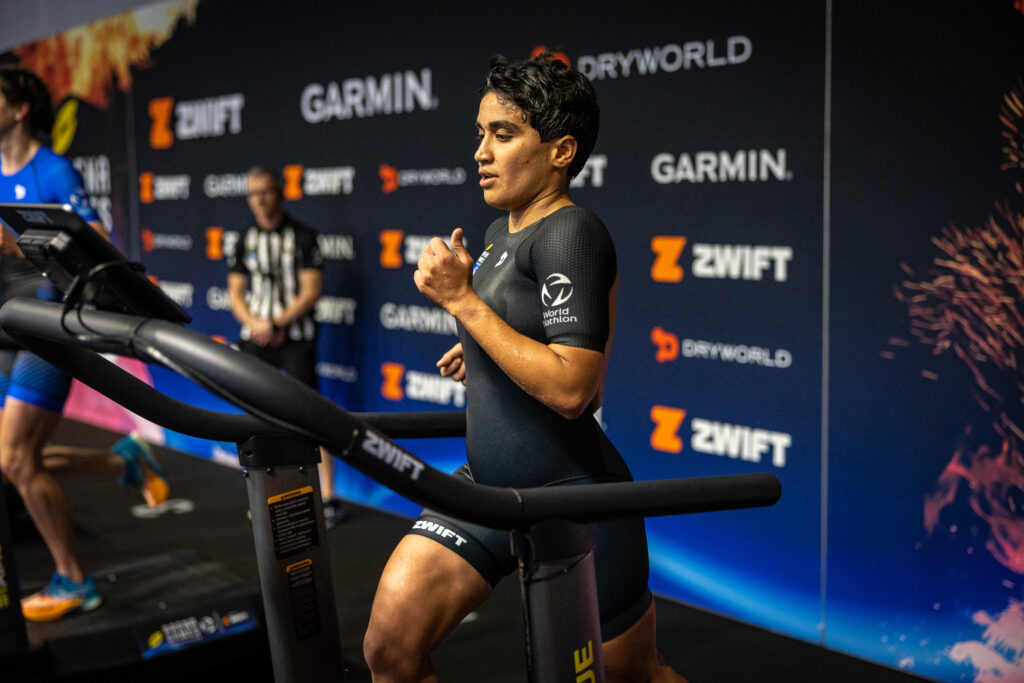
But these races in India often take place in temperatures of 30°C or more, said Pragnya. She recalled competing in the 2023 Asian Games qualifiers in Chennai in a dangerous afternoon temperature of 45°C and over 80% humidity. “The combination was a killer,” said Pragnya, “but the race sponsor wanted an afternoon race to attract more spectators.” I specifically went back to India for two weeks before the race to train and acclimatise to those conditions, but it still took me weeks to recover from the race, she said.
In the Rings of Fire report, Pragnya also described in detail the effects of extreme heat when competing: “[When heat illness strikes] one starts feeling cold. Your body starts shivering, you feel dizzy and your body feels like it’s shutting down. It does not make sense, what is happening at that time. In the end, you faint.” Pragnya fears for the lives of athletes. “It is scary and can be fatal.”
Dangerous Heat Impacts Are Rife in Sports
Unfortunately, experiences such as these are all too common. The report highlights the accounts of dozens of other athletes who have suffered from the physical and mental impacts of climate change on sports.
In Tokyo 2020, the organisers moved the triathlon start time to 6:30 a.m., yet water temperatures still reached 30°C. The men’s race winner, Kristian Blummenfelt, vomited and crumpled to the floor before he was put into a wheelchair and led to medical assistance. Several other athletes similarly suffered.
New Zealand tennis player Marcus Daniell, who won a bronze medal at the Tokyo Games in the men’s doubles, reveals his fears of heat-related deaths in sport as athletes compete in a climate of “true risk – the type of risk that could potentially be fatal”. He describes playing in conditions “where an egg can literally be fried on the court. This is not how sport should be played”.
New Zealand hockey player Hugo Inglis said that during a tournament in Kuantan, Malaysia, players endured 40°C conditions, which rose to 47°C on the field. Some suffered heatstroke, with one player nearly blacking out in the changing room. “I felt terrible. Physically sick, head pounding, body going limp, some shivers. The room goes dark and vision is hard to focus,” he said.
Yusuke Suzuki, an Olympic race walker from Japan and 2019 World Champion, suffered severe dehydration and heatstroke during the 2019 World Championships in Doha. The experience triggered prolonged physical and mental impacts that led to depression. “It took me two years to start training again,” he said. “The 2019 Doha race took a toll on me until this day.” Reflecting on his ordeal, Suzuki said, “I absolutely do not want young athletes to experience what I have experienced.”
Young People, Climate Crisis and Sports
It’s not just athletes and sports players impacted by climate driven-rising high temperatures, humidity and environmental impacts. Young people are particularly vulnerable to extreme heat exposure. In India, extreme heat and poor air quality caused by pollution significantly inhibit sports and outdoor activities for young people, Pragnya Mohan told CITA. Parents are reluctant to let their children play outside when temperatures can reach 40°C for most of the year.
In her home city of Ahmedabad, Pragnya created a project called “Ek Beti, Ek Cycle“, meaning “one daughter, one bike”, which provides bicycles and training to young female students so they can commute to school safely and confidently. However, she explained her recent plans for summer cycling camps had to be abandoned due to the intense heat. “Extreme heat has a big impact on the mobility of young girls in India,” said Pragnya. More widely, heat is one of the reasons pursuing a career in sports and athletics is uncommon in India compared to places like Europe, she said.
Sports Industry and Fossil Fuels: A Toxic Relationship
Witnessing athletes collapsing during or after finishing competitions reminds the world of the severe impacts of climate change on sports, said Jacob Tuwei. Likewise, President of World Athletics Lord Sebastian Coe warns that climate change and rising temperatures pose an “existential threat” to sports.
Yet, the world’s carbon majors – the companies responsible for most of the world’s planet-heating greenhouse gas emissions — also sponsor sports events, teams and leagues whose futures are threatened by these very emissions. For the Olympics specifically, while the Paris host committee has committed to hosting a “fossil fuel free” Games, many of the event and team sponsors are directly tied to fossil fuel interests. In the second of this three-part series, we’ll explore these links further, and highlight the people and groups campaigning for sports sector to end its relationship with climate-endangering fossil fuels once and for all.
Read Part 2 and Part 3 of this article series.
The Ring of Fire Report was produced by FrontRunners and BASIS, with acknowledgements to Climate Central, Professor Mike Tipton (University of Portsmouth), and Dr Jo Corbett (University of Portsmouth). You can download the report choosing from English, Swahili or Japanese here.
Evelyn Smail
Writer, United Kingdom
Evelyn is a freelance writer and journalist specialising in climate science and policy, the just energy transition and the human impacts of climate change. She writes for independent publications, NGOs and environmental organisations. Evelyn has a background in sustainable development, climate justice and human rights.
Evelyn is a freelance writer and journalist specialising in climate science and policy, the just energy transition and the human impacts of climate change. She writes for independent publications, NGOs and environmental organisations. Evelyn has a background in sustainable development, climate justice and human rights.

